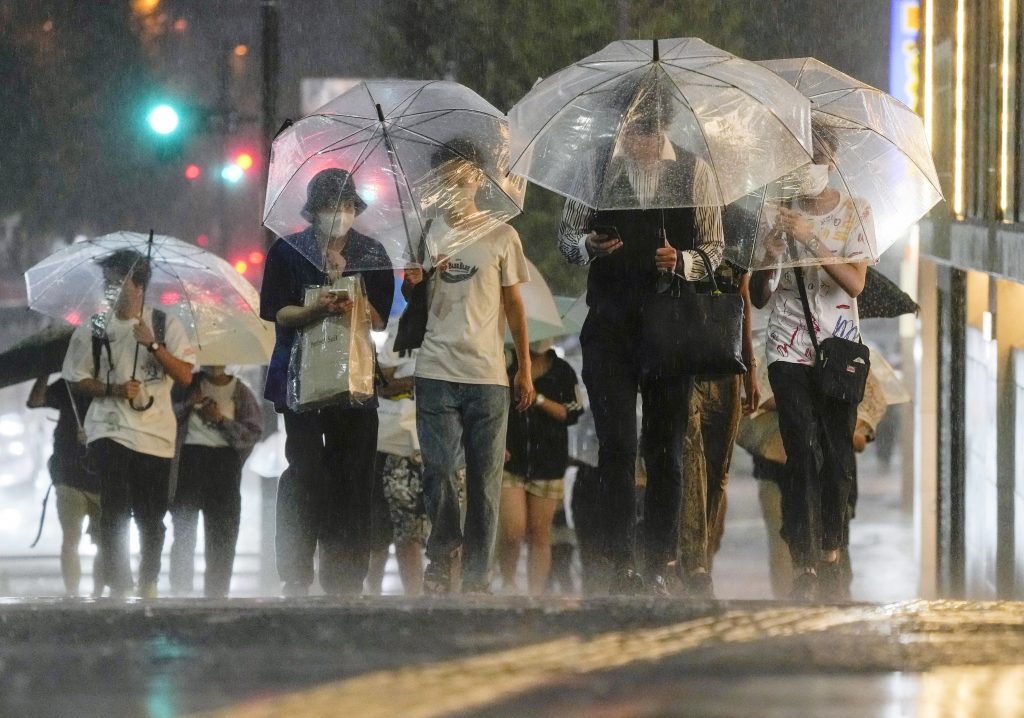
- ARAB NEWS
- 16 Jun 2025

Typhoon Meari hit the Kanto eastern Japan region, which includes Tokyo, on Saturday night as it disrupted traffic in many areas in the middle of the Bon summer holiday period.
The eighth typhoon of the year made landfall in the Shizuoka Prefecture’s Izu Peninsula in the Tokai central Japan region around 5:30 p.m. (8:30 a.m. GMT). It later crossed the neighboring Kanto region to reach the Pacific Ocean at Ibaraki Prefecture, according to the Japan Meteorological Agency.
Typhoon Meari caused heavy rain in Tokai, Kanto, the Izu island chain and the Hokuriku central Japan region. In the chain, the island of Izu Oshima had a rainfall of about 110 millimeters during the hour to 9:10 p.m.
Japan Airlines and All Nippon Airways canceled 135 flights by Saturday night, affecting a total of 15,000 people. Sections of the Tomei and Shin-Tomei expressways in Shizuoka were temporarily closed.
Central Japan Railway Co., or JR Tokai, stopped Shinkansen bullet train operations between Shizuoka and Kakegawa stations for about 30 minutes, causing 146 trains to be delayed. East Japan Railway Co. or JR East, canceled some conventional trains mainly in Kanto’s Chiba Prefecture.
As of midnight, the typhoon was traveling east-northeast at 40 kilometers per hour at an offshore location 90 kilometers east of the Ibaraki city of Mito.
It had a central atmospheric pressure of 998 hectopascals, packing a maximum sustained wind speed of 20 meters per second and a maximum instantaneous wind speed of 30 meters per second.
Meanwhile, a stationary front caused a downpour in the Tohoku northeastern region, including Akita Prefecture, intermittently from Friday night.
The prefecture’s city of Kazuno had a rainfall of about 90 millimeters during the hour to 1:30 a.m. Saturday. The agency urged residents of the Akita town of Gojome to take emergency measures to protect themselves due to flooding from a local river.
JIJI Press